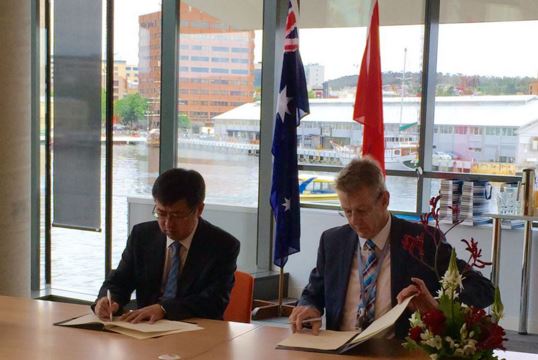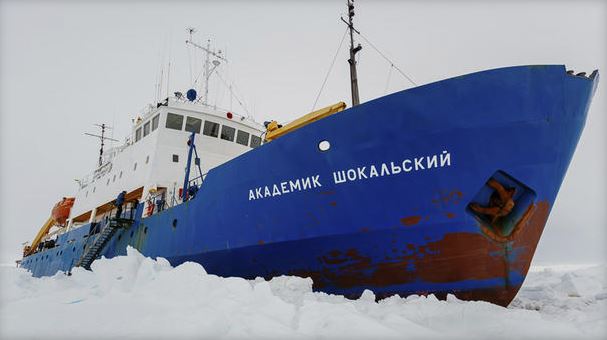Australian and Chinese scientists have agreed to share their gathered data and research on Antarctic sea ice. They will work together to develop new prediction methods to aid the challenging task that ships today face of navigating around Antarctic sea ice.
China’s National Marine Environment Forecasting Centre (NMEFC) and Australia’s Antarctic Climate and Ecosystems Cooperative Research Centre (ACE CRC) have today signed a Memorandum of Understanding (a formal agreement between two or more parties).
Mark Kelleher, acting CEO of the ACE CRC, said the agreement’s main focus was cooperation to develop scientific methods for predicting sea ice conditions, in support of Australian and Chinese Antarctic programs.
 Mark Kelleher and his Chinese counterpart signing the MoU. (Image: http://acecrc.org.au)
Mark Kelleher and his Chinese counterpart signing the MoU. (Image: http://acecrc.org.au)
Shipping companies and scientists need help
Mr. Kelleher said:
“This MOU (memorandum of understanding) enables our two organisations to work closely together to solve some of the big challenges associated with sea ice in Antarctica. Unpredictable sea ice conditions can create headaches for scientific and resupply operations in Antarctica, and the need for a more reliable method of forecasting has become clear.”
“We have also seen a number of private and commercial ships becoming stuck in the sea ice in recent years, which can lead to costly rescue operations that delay scientific work. Our new partners have a long reputation of excellence in marine environmental forecasting and remote sensing, and we bring considerable expertise and field experience in Antarctic sea ice.”
Mr. Kelleher believes this new partnership places both bodies in a strong position to take a lead in developing the techniques and models needed to provide reliable sea ice forecasting to aid shipping in the Antarctic region.
 Russian ship MV Akademik Shokalskiy trapped in thick Antarctic ice in December 2013. Better forecasting models could help reduce the frequency of such incidents.
Russian ship MV Akademik Shokalskiy trapped in thick Antarctic ice in December 2013. Better forecasting models could help reduce the frequency of such incidents.
Antarctica’s sea ice expanding
In September 2014, Antarctica’s sea ice exceeded 20 million square kilometres (7,722,043 square miles) for the first time ever (in recorded history).
Mr. Kelleher explained:
“The patterns of sea ice distribution around Antarctica have been changing significantly. In some regions sea is ice disappearing, and in others we have seen it significantly expanding.”
“Understanding the forces that shape Antarctic sea ice conditions is not just important for navigation, it helps us to understand causes and impacts of climate change.”
This agreement comes not long after the signing of a Memorandum of Understanding between the Australian and Chinese governments in 2014, during President Ji Xinping’s visit to Hobart.
Mr. Kelleher said:
“This agreement is another small step in a long and proud history of co-operation between Australian and Chinese scientists in Antarctica. Chinese scientists first travelled to Antarctica on an Australian expedition in the late 1970s, and we are pleased that the bonds formed during that era are still very much alive today.”
Last week, American space agency NASA reported that the amount of ice in Antarctica has increased considerably, much more than the amount lost from thinning glaciers. Over a ten-year period ending in 2001, the Antarctic ice sheet made a net gain of 112 billion tons of ice annually, according to an analysis of satellite data. The net gain has continued since then.
